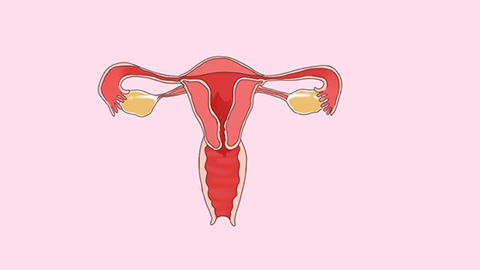What to do about bleeding during ovulation
Generally, bleeding during ovulation may be caused by a temporary drop in estrogen levels, follicle rupture irritation during ovulation, endometritis, cervicitis, endometrial polyps, and other factors. It is recommended to seek timely medical attention, identify the underlying cause, and improve the condition under a doctor's guidance through general care, medication, and other treatments. A detailed analysis is as follows:

1. Temporary drop in estrogen levels: Estrogen levels rise before ovulation and briefly decline afterward, causing slight shedding and bleeding of the endometrium. The bleeding is minimal and lasts 1-3 days. No specific treatment is required. Pay attention to rest, avoid strenuous exercise, maintain external genital hygiene, change sanitary products frequently, eat light meals, and reduce the intake of spicy or irritating foods.
2. Follicle rupture irritation during ovulation: A small amount of blood may flow into the pelvic cavity after follicle rupture, irritating the pelvic cavity and vaginal mucosa, which may cause minor bleeding. Applying heat compresses to the lower abdomen can help improve local blood circulation and relieve discomfort. Avoid sexual intercourse to prevent infection. Stay warm during the bleeding period and avoid getting chilled.
3. Endometritis: Inflammation occurs when the endometrium is invaded by pathogens. The inflamed tissue becomes congested and swollen, making it prone to bleeding during ovulation. It may be accompanied by lower abdominal pain and abnormal vaginal discharge. Follow your doctor's instructions to use medications such as metronidazole tablets, levofloxacin tablets, cefuroxime axetil tablets, and others to control inflammation.
4. Cervicitis: Inflammation of the cervix caused by bacterial or viral infections leads to congestion and fragility of the cervical mucosa. Hormonal fluctuations during ovulation may cause mucosal damage and bleeding, which may be accompanied by increased vaginal discharge. Follow your doctor's instructions to use anti-infective medications such as azithromycin dispersible tablets, doxycycline tablets, and cefixime capsules. Avoid sexual intercourse during treatment, maintain personal hygiene, and prevent cross-infection.
5. Endometrial polyps: Localized excessive growth of the endometrium forms polyps. Hormonal changes during ovulation may cause surface bleeding of the polyps, manifesting as spotting or brownish discharge. Smaller polyps can be treated with hormone-regulating medications such as progesterone soft capsules, dydrogesterone tablets, ethinylestradiol cyproterone acetate tablets, etc., as directed by a doctor to inhibit polyp growth.
In daily life, maintain a regular routine, avoid staying up late, keep your emotions stable, and reduce mental stress. Monitor the bleeding condition, record the duration, amount, and associated symptoms for reference by your doctor to aid in recovery.









